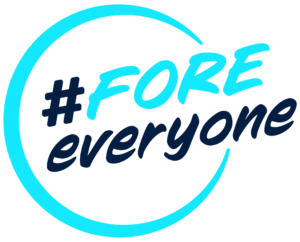Introduction
In 2018, the R&A published a report, Women’s, Girls’ and Family Participation in Golf: An Overview of Existing Research (2018) which highlighted that women:
“found the opportunity to be outdoors, relaxing and unwinding with friends, as the most appealing factors for playing golf. The main reasons given for non participation were cost (37%), the impact of family responsibilities (30%), and amount of time taken to play (17%).”
“are the key decision makers in regards to what families do with their leisure time and money (Whaley, 2016).”
Another key factor, was the financial benefit to the golf industry from more women playing golf, with an uplift of up to $35billion through increased participation from the 36.9 million latent female golfers (page 5).
These 2 factors have resulted in a number of international, national and individual initiatives to attract more women and their families in to golf, and to educate the industry of the value of increasing the number of women employed throughout the industry, the primary international women focused initiatives from the R&A are:
and the local new family orientated GOLF-IT initiative outside Glasgow.
Each campaign is focused on golfer acquisition, trying to attract more women, and in turn their families in to golf, however there appears to be limited published research in to the existing women’s golf experience or the development of retention programs for existing golfers.
The research below highlights where the gaps in the women’s golf experience exist and the initiatives groups and individuals have launched to address gaps they have identified in their own golf experience through new initiatives.
RESEARCH METHODS
The research undertaken had 2 main elements
Qualitative, quantitative & desk research
- research and initiatives from the International and National Governing Bodies
- followed the new and ongoing initiatives from across all areas of golf to get more women in to golf
- review of multiple county associations competitive and social offerings from across England
- research in to the history of women’s golf FOREWomen from 1893-1914
- research in to established and new self organised women’s golfing associations, societies and groups
- listened to a range of women golfers, lifetime, adult returners and new players across the UK
Golf Experience of a returning golfer
- membership of 2 clubs,
- 9 hole local club to get re-started (3 years)
- 36 hole to develop skills, meet and play with more competitive women (6.5 years)
- compete in
- Club competitive and friendly teams,
- County team & individual match play competitions and senior county championships
- Wales and England Senior Open Championships
- participate in club social and fun games and events, and play in other clubs social team open days
OBSERVATIONS
- The majority of women’s golf is played Monday to Friday, over the last few years, more weekend opportunities have been created, however this is still less than those generally available to men
- Women are interested in
- opportunities to play golf outside their club or county
- open qualifying competitions for women during the week (there are mens individual opens available)
- open qualifying competitions for women at weekends (there are mens individual opens available)
- open non-qualifying competitions for women at weekends
- Women between 21-49 generally work and/or have a family therefore they are time strapped and do not get many opportunities to play in competitions or fun events, therefore
- There are limited opportunities for women between the ages of 21 and 49 to play golf
- As 7 day memberships are the most expensive they hard for younger working women and those bringing up their families, find it hard to justify the cost of a 7 day membership, due to the limitations on their time
- The majority of club competitions are 18 holes, which take from 3.5-5 hours to play depending on field size and format
- Shorter 9 and 6 hole formats are being adopted to make golf more consumable for a broader audience
- The world of golf opens up to women golfers at the age of 50, with senior series, senior events and senior championships – most of which are during the week
- There is a lot of information available to golfers about rules, handicaps, competitive and fun formats, county and national playing opportunities and industry news however this is hard to find as it is spread across multiple websites
- There are a number of initiatives to get more women to learn to play golf, which are attracting women from different backgrounds and abilities:
- There are new entrants to the golf market, which are attracting different women (and men) in to golf
- Topgolf
- Pitch Golf
- Chelsea Golf Club
- Plus a wide range of small studios being setup by PGA professionals to offer a more intimate year round coaching and practise environment.
- There is a predicated uplift in revenue for the global golf business of $35bilion if all the women who have tried or shown an interest in golf take up the sport, this is positive for the world of golf
- Diversity, Equality and Inclusion (DEI) are key performance indicators for organisations across all sectors and as a sport which offers so many health, fitness and social benefits, it is a focus of many organisations both within golf and across other sectors.
There are a lot of initiatives focused on the acquisition of new players, from all backgrounds and with different aspirations and goals including, new and returning players, working women, social golfers and competitive players interested in all aspects from club to becoming an elite amateur any age and ability.
TECHNOLOGY
Advances in technology are creating a varied golf experience for players of all backgrounds, these include:
Tournament Software
- Golf Genius – an flexible and feature rich tournament platform integrated to the WHS system globally
- Now Compete – a tool for groups up to 120 players to create and run their own competitions, with links to course slope information
Golf Simulators
Golf Simulators, provide virtual golf experiences for golf driving ranges, studios and golfers home’s, where individuals and teams can “virtually” play hundreds of courses from around the world, and individuals can use the technology to improve their own performance through, swing and club distance analysis, some of the technology available includes:
- Websites and content management platforms provide the means to bring together information to a central point, making it easy for golfers to find.
- Marketing platforms which can be used to communicate and engage the golfing community
- Online community platforms which can be used to bring golfers together online.
New technology offers Golf the opportunity to allow more players from any background the opportunity to participate in golf in a format which fits with their lifestyle and interests at any point throughout their lifetime.
A brief history of Womens Golf 1567-2022
The history of women’s golf begins in 1567, where according to the Scottish Golf History Website, Mary Queen of Scots played and lost a match against her lady in waiting, Mary Seton, the site details the history of women’s golf and their golf clubs
- 1754 – R&A GC St Andrews
- 1761 – Bruntsfield Links GS
- 1774 – Royal Musselburgh GC
- 1777 – Fraserburgh GC (and 1881)
- 1786 – Crail
- 1791 – Cruden Bay (and 1881)
- 1794 – Dunbar
- 1810 – Royal Montrose GC
- 1817 – Scotscraig GC
- 1820 – Innerleven (Leven) GS
Women have enjoyed participating in golf since its inception. To learn more about the early history of womens golf, please visit the Scottish Golf History Website
The St Andrews Putting Club, founded in 1867, is a club dedicated to putting.
The putting course is open to the public, via a booking system, with 2020 prices at £4 per round for adults and £2 per round for seniors and children (under 16). Public access is available at weekends in March and daily form April and October.
1893 – Womens Golf Gets Organised
In 1893, Issette Pearson, a pioneer in women’s golf, was the first honorary secretary for the Ladies Golf Union, in 1910, she launched the Pearson Trophy, a team match play inter-county knockout competition, still played in Hertfordshire, Kent, Surrey and Sussex today.
Women to the Fore 1893-1914 a research paper published with permission of the authors, outlines the early history of women’s golf, the inception of the LGU and also the creation of the first universal handicap by Issette and Mabel Stringer, 2 prominent women in golf’s history.
Over the last 130 years, women have continued to support each other through continuing to run competitions and associations, created by these and other women pioneers in golf.
This continues today, through new initiatives setup over the last few years by women looking to address the gaps in the women’s golf experience and bring like minded women together to enjoy a variety of golf formats across different courses.
UK Womens Golf Ecosystem 2022
In 2022, the club focused model has matured with the R&A and the national governing bodies along with regional associations and individual clubs focused on the members experience, where each club offers its own unique experience. The governing bodies and regional associations offer competitive and elite players the opportunity to participate in competitions and events outside of their own club(s).

The R&A have launched their Women in Golf Charter, which is a great initiative to focus national governing bodies, county associations, commercial organisations and individual clubs, on both playing and employment opportunities in the golf industry. It is a great initiative for WOTT and other women’s initiatives to support and be associated with, as it encompassed everything WOTT was setup to do.
To learn more about the Women in Golf Professional Development Program for Women working in the Global Golf Industry across all disciplines from course design, green keeping, club management, tournament and governing bodies administration, manufacturers and other suppliers, any part of the golf eco-system, click HERE
To sign up for the program click HERE
Women’s Golf Experience Beyond Clubs
While the focus of the women’s golf experience is mainly up to individual clubs to provide, outside of clubs, there are county associations offering additional, club, team and individual playing opportunities and independent associations, alliances, golf societies and friendship groups enhancing their own golf experiences.
Each group is providing a valuable service and experience for its members, however there is an opportunity to enhance the overall women’s golf experience through supporting these groups and identifying ways to augment and compliment their offerings to create a fuller women’s golf experience.
Brenda King Foursomes
Brenda King was the first Senior British Womens Champion in 1981. A national 2 day medal foursomes competition was setup in her memory.
Up until 2020, England Golf ran the Brenda King Foursomes, when they decided to remove the tournament from their schedule, the belief is that this was due to lack of entrants and there not being an equivalent mens competition.
Determined not to keep the competition going, a committee of senior women from across England, who have played in the BK4’s and other senior tournaments for a number of years, came together to take over and run the event. The website is HERE
In 2020, the first post COVID competition was held at Minchinhampton in the Cotswolds, and attracted 66 pairs from Devon, Surrey, Sussex, Kent, the Midlands and North of England.
The Brenda King competition continues to be very popular with women golfers; this enthusiasm is reflected in the number of entries and the speed at which the event fills up. In 2022, the Brenda King Entries opened on the 1st Feb and it was full with 88 pairs signing up within 3 weeks.
This in itself, shows there is an interest and demand for more national playing opportunities for women to come together to compete and enjoy golf.
At Minchinhampton, a number of women golfers shared their golf experiences, their interest and challenges in finding new playing opportunities beyond the club, county and national offerings.
These conversations confirmed that there was a gap in the women’s golf experience and a belief in the community, that the governing bodies had little or no interest in supporting existing women golfers.
NB: There are other regional competitions played in memory of other pioneering women golfers across the UK.
Womens Golf Survey – November 2020
In November 2020, an online survey ran to gauge the level of interest in women golfers for different playing opportunities.
533 women responded within 48 hours of receiving a link to the survey.
The survey clearly shows an interest in more varied playing opportunities in women’s golf.
New Womens Golf Initiatives
In the last few years, women have been creating new initiatives to address different needs based on their own experience and those around them, in the UK and overseas.
The key insight from these new initiatives is that there are areas of the women’s golf experience which can be and are being enhanced through individual initiatives, and there is an opportunity to work with and support women to create a richer golf experience which has the potential to extend beyond women.
Golf Empire along with other websites provide a directory of playing opportunities, open events and amateur tours. Carrying out research in to the playing opportunities for men, women and mixed, shows a discrepancy in the number and variety of playing opportunities offered for men and women. There is a growing number of mixed events and mini tours.
SUMMARY OF FINDINGS
In 2018 the R&A published a report showing
- women “found the opportunity to be outdoors, relaxing and unwinding with friends, as the most appealing factors for playing golf. The main reasons given for non participation were cost (37%), the impact of family responsibilities (30%), and amount of time taken to play (17%).
women “are the key decision makers in regards to what families do with their leisure time and money (Whaley, 2016).”
36.9million latent female golfers around the world, which could increase golf industry revenues by $35billion.
Since 2018, the R&A, national governing bodies and industry suppliers have focused their efforts on attracting female golfers
- Individual golf clubs are the main delivery vehicles for the women’s golf experience, which is unique to each club
- County associations & national governing bodies provide additional playing opportunities for members of clubs within their region
- Independent associations, societies and groups self-organise and self-fund additional playing opportunities for their groups members
- New initiatives are springing up, created by individual women, who have identified a gap in the women’s golf experience
- There is a growing focus on women’s sport within the press industry, who are willing to support and promote new initiatives
- There is an interest in golf as a sport as it can benefit the health and well being of players across all ages and abilities
The Future of The Womens Golf Experience
There is an interest and appetite for introducing more women to golf and enhancing the overall women’s golf experience, while women have been pioneers in golf since 1893, there are still opportunities to enhance the existing experience and create an all round golf experience for women of all ages and abilities.
There is a huge amount of interest in introducing women to golf, and an opportunity to develop new retention strategies for new and existing players, alongside the acquisition strategies in place, securing the investment of time and money in delivering on the long term goals of the international and national governing bodies and other organisations involved in the creation and delivery of the golf experience.








